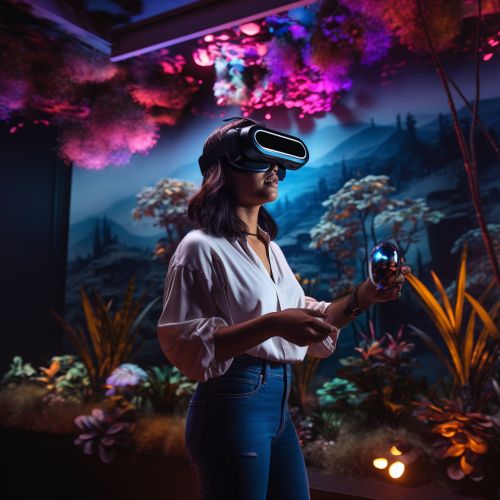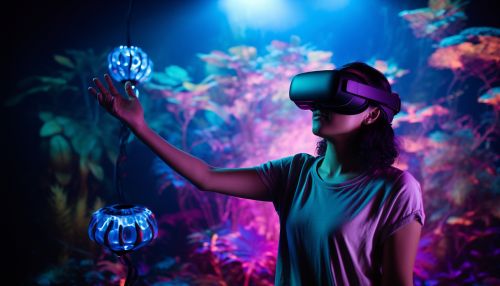User Experience Design in Virtual Reality
Introduction
User Experience Design (UXD or UED) is a design process whose sole objective is to design a system that offers a great experience to its users. Thus UXD encompasses the concepts of user interface (UI) design, usability (ease of use), and interaction design. Virtual Reality (VR) is a simulated experience that can be similar to or completely different from the real world. The intersection of these two fields is known as User Experience Design in Virtual Reality.


Understanding User Experience Design
User Experience Design is a multidisciplinary field that incorporates aspects from psychology, business, market research, design and technology. The aim of UXD is to improve customer satisfaction and loyalty by improving the pleasure, ease of use, and interaction between the customer and the product. The UXD process is used to determine what the experience of using a product will be like for the user. It involves the creation of the smallest details of that product, from the tactile feel and visual design of the product, to the user's emotional response to using it.
Understanding Virtual Reality
Virtual Reality is a simulated experience that can be similar to or completely different from the real world. It is a computer-generated simulation of a three-dimensional image or environment that can be interacted with in a seemingly real or physical way by a person using special electronic equipment, such as a helmet with a screen inside or gloves fitted with sensors. VR systems that include transmission of vibrations and other sensations to the user through a game controller or other devices are known as haptic systems. This tactile information is generally known as force feedback in medical, gaming and military applications.
User Experience Design in Virtual Reality
User Experience Design in Virtual Reality is the practice of creating, designing, and optimizing user experiences within the realm of virtual reality. The goal of VR UX design is to create experiences that are immersive, intuitive, and as close as possible to real-world experiences. This involves a deep understanding of human behavior, sensory experience, digital technology and storytelling.
Principles of VR UX Design
There are several key principles that guide the process of VR UX design. These include:
- Immersion: This is the feeling of being present in the virtual environment. The more immersive the experience, the more real it feels to the user. Immersion can be enhanced through the use of realistic graphics, sounds, and interactions.
- Interaction: This refers to the ways in which the user can interact with the virtual environment. This can be through the use of controllers, hand tracking, voice commands, or even physical movement.
- Comfort: This is a crucial aspect of VR UX design. If the user feels discomfort while using the VR system, they are unlikely to have a positive experience. Comfort can be affected by factors such as motion sickness, the weight of the VR headset, and the user's physical safety in the real world while they are immersed in the virtual one.
- Usability: This refers to how easy it is for the user to understand and use the VR system. This includes aspects such as intuitive controls, clear instructions, and the ease with which the user can achieve their goals within the virtual environment.
Challenges in VR UX Design
Designing user experiences for virtual reality presents unique challenges. These include:
- Motion Sickness: This is a common problem in VR, caused by the disconnect between what the user's eyes see and what their body feels. Designers need to find ways to minimize this effect to ensure a comfortable user experience.
- Spatial Awareness: In a virtual environment, users can lose awareness of their real-world surroundings. This can lead to physical accidents if not properly addressed.
- Interface Design: Traditional interface design principles do not always apply in VR. Designers need to invent new ways for users to interact with the virtual environment.
- Performance Issues: High-quality VR experiences require powerful hardware. Designers must balance the desire for high-quality graphics and smooth performance with the capabilities of the hardware.
Future of User Experience Design in Virtual Reality
The future of User Experience Design in Virtual Reality is promising, with many areas of potential growth and development. As technology continues to evolve, so too will the possibilities for immersive, interactive virtual experiences. This could include advancements in haptic feedback, improvements in motion tracking technology, and the development of more intuitive user interfaces. Furthermore, as more people gain access to VR technology, there will be increased demand for high-quality user experiences, driving further innovation in the field.
